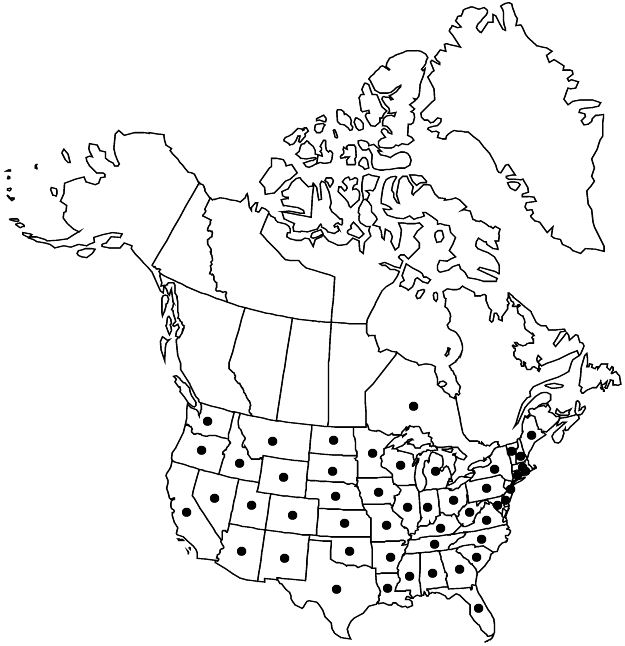Abutilon theophrasti
Malvenfam., 28. 1787.
Herbs, annual, to 1+ m. Stems erect, stellate-tomentose, without simple hairs. Leaves: stipules lanceolate; petiole subequal to blade; blade concolorous, broadly ovate to suborbiculate, 8–15 cm, ± as long as wide, base cordate, margins crenulate, apex acuminate, surfaces softly pubescent. Inflorescences usually solitary flowers, sometimes cymose or racemose. Flowers: calyx 10 mm, lobes not overlapping, erect in fruit, ovate; corolla pale yellow throughout, petals 8–13 mm; staminal column glabrous; style 13–15-branched. Schizocarps broadly ovoid, 15 × 20 mm; mericarps: apex spinose, spines divergent, 3–6 mm, hirsute. Seeds 3 per mericarp, 3–4 mm, minutely puberulent. 2n = 84.
Phenology: Flowering summer–fall.
Habitat: Soybean, corn, and cotton fields, naturalized in disturbed sites
Elevation: 0–1400 m
Distribution

Introduced; Ont., Ala., Ariz., Ark., Calif., Colo., Conn., Del., Fla., Ga., Idaho, Ill., Ind., Iowa, Kans., Ky., La., Maine, Md., Mass., Mich., Minn., Miss., Mo., Mont., Nebr., Nev., N.H., N.J., N.Mex., N.Y., N.C., N.Dak., Ohio, Okla., Oreg., Pa., R.I., S.C., S.Dak., Tenn., Tex., Utah, Vt., Va., Wash., W.Va., Wis., Wyo., Europe, Asia.
Discussion
The history of the introduction of Abutilon theophrasti to North America was recounted by N. R. Spencer (1984). It can be abundant locally, thriving when rich cultivated soils are disturbed, especially in the midwestern region. Interference with crops has been extensive.
Selected References
None.